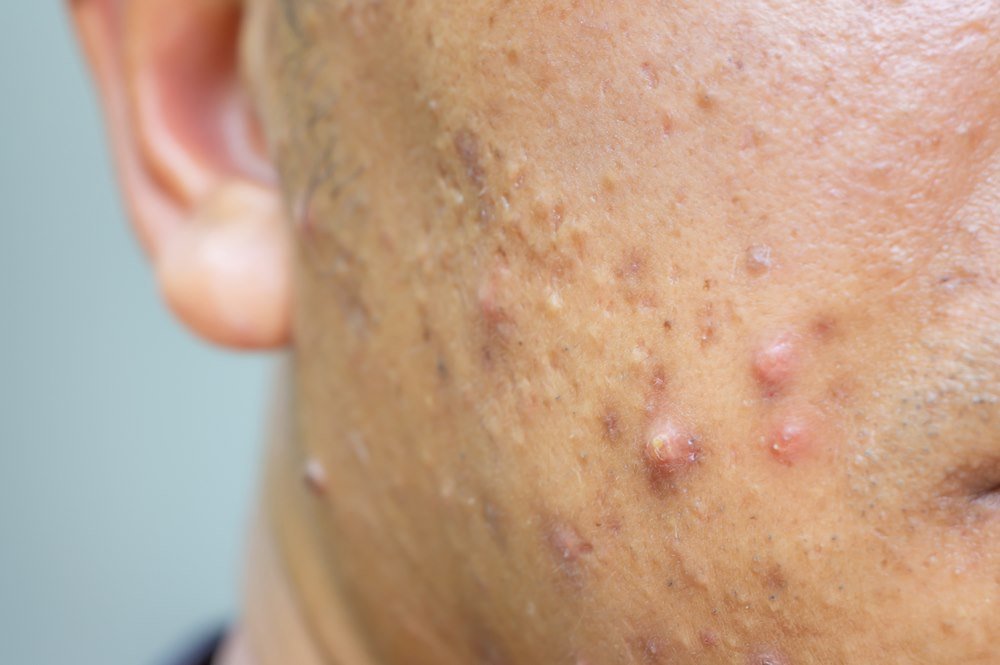Presentation of severe acne

Acne progressed to this stage, also known as cystic-nodular acne, is the worst type. It involves eruptions that go deeper into the skin layers than lesion in mild or moderate types. It is characterized by following symptoms:
- Cyst: these are larger and deeper than the comedones, seen in mild type. The white or pale color may be due to the pus filled in it.
- Nodules: these are bumps arising from the deep layers of the skin. These may be skin-colored and are tender to touch.
- Inflammation: it is more marked as the severity progresses.
- Redness: red base around the cystic eruptions is very noticeable.
- Pain in pimples
- Acne marks: acne marks or scars are a marker of severe acne.
- Dark spots: as the pimples fade, they may leave dark spots due to increased melanin production. This is called post-inflammatory hyperpigmentation.
This type of acne is very hard to treat and require proper treatment. Medications used to treat mild or moderate acne either don’t work on this type of acne, or work slowly. Messing up with the cysts can leave scar marks. Steroid injections are used to decrease inflammation caused by cystic acne.
